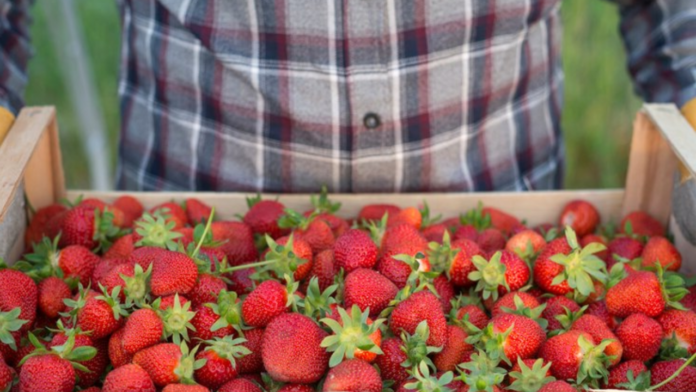Strawberries are more than just a tasty treat; they’re an integral part of many diets around the world. Their popularity comes from their sweet taste and nutritional benefits, but lately, there’s been a buzz around an unexpected issue—a strawberry shortage. This shortage isn’t just a small hiccup; it’s a complex problem affecting both consumers and producers. Understanding these challenges can help us work toward ensuring that our future is filled with an abundance of strawberries.
Seasonal Supply and Demand
Strawberries go through ups and downs in supply throughout the year due to seasonal changes. This isn’t news to the strawberry industry, which regularly experiences fluctuations. What is concerning, however, is the current scenario as of December 2024. Organic strawberry supply is particularly light because California’s crop is winding down. Meanwhile, Mexico and Florida’s production is just beginning to gear up.
These regions are crucial players in the strawberry market. California, known for its vast agricultural output, winds down production as winter approaches. Mexico and Florida step in during this period, but their production hasn’t reached its peak yet. We can expect stronger numbers in February and March, but until then, the low supply might not meet the high demand. This kind of situation makes it challenging for consumers to find fresh strawberries and for businesses to keep their shelves stocked. It’s a key example of how intertwined global agriculture is with our daily lives, and why understanding these patterns helps avoid surprises at the grocery store.
Disease and Plant Shortages
Diseases in agriculture, just like in human populations, can spread rapidly and cause tremendous loss. In particular, a fungal disease known as Neopestalotiopsis is taking a toll on strawberry supplies. This disease has struck multiple nurseries in Prince Edward Island, a critical area for strawberry plant production. The result? A troubling shortage of strawberry tips and plug plants.
Nurseries are vital because they supply plants that strawberry growers rely on. Without healthy plants, there’s a chain reaction that disrupts the entire production process. For Southeast growers who depend heavily on these nurseries, the impact is significant. Many growers have faced canceled orders and have had to deal with increased costs for the plants that are still available. This situation illustrates the domino effect—how one issue can rapidly influence the entire supply chain, making it a priority to manage plant health and prevent disease spread.
Labor Shortages
Labor is the lifeblood of agriculture, and strawberries are no exception. Florida, the leading domestic supplier of strawberries during the winter, is struggling with labor shortages. Almost 80% of Florida’s strawberry growers have reported a lack of labor throughout the season, with the most critical gaps appearing during peak harvest time.
The industry relies on migrant workers, whose availability has been affected by stricter border controls and changing economic conditions in places like Mexico. Economic improvements there mean fewer workers are coming to the U.S. The H-2A guest worker program is designed to help, but it’s not a perfect solution. This program is both expensive and complex, making it a less-than-ideal fix for many growers. The impact of labor shortages is seen in slower harvests and potentially wasted crops. This issue underscores the need to rethink how we attract and retain agricultural labor.
Climate Change and Pest Management
Climate change is reshaping agriculture worldwide, and strawberries are feeling the heat, literally. Unpredictable weather patterns are resulting in fluctuating yields and quality. For crops like strawberries, which thrive on consistency, these changes can be devastating. Growers are adapting to increasingly irregular and severe weather conditions, but it is not easy.
Strawberries are also vulnerable to a variety of pests and diseases, including powdery mildew and aphids. Managing these requires knowledge, strategy, and resources. Effective pest management is vital for maintaining healthy crops, but it adds an extra layer of complexity to farming. Balancing climate impacts with pest concerns means that every growing season brings new challenges. It’s essential to develop better management strategies to secure a stable supply of strawberries throughout the year.
Market and Production Trends
Despite these challenges, the global strawberry market shows potential for growth. The demand for healthy snacks like strawberries is on the rise, pushing the industry toward innovation. The market is expected to produce over 10 million metric tons by 2025. High-tech solutions like vertical farming and hydroponics are at the forefront of this change, promising higher yields and potentially year-round production.
These innovations offer exciting possibilities for meeting global demand, yet they don’t erase the core issues facing the industry. Labor shortages, climate change, and pest management each remain significant hurdles. For the strawberry market to thrive, these challenges need solutions that blend technological advancement with traditional farming wisdom. It’s a delicate balance, but one that presents opportunities for growth and sustainability.
Daily Business Voice provides insightful updates and deep dives into industries like agriculture, helping readers stay informed about the latest trends and issues.
Conclusion
The current strawberry shortage is an indication of the challenges within the agricultural sector. From seasonal demand shifts and plant diseases to labor and climate pressures, each hurdle needs careful navigation. Addressing these issues isn’t just about solving immediate supply problems—it’s about ensuring a fruitful future.
The strawberry industry, with its complex challenges, can continue to thrive by embracing innovation and adapting to change. The keyword here is resilience. By understanding and addressing the issues at hand, the industry can meet growing demand and keep strawberries on our tables year-round. It’s an ongoing journey, but with the right focus, it’s one that promises sweetness ahead for both producers and consumers.
